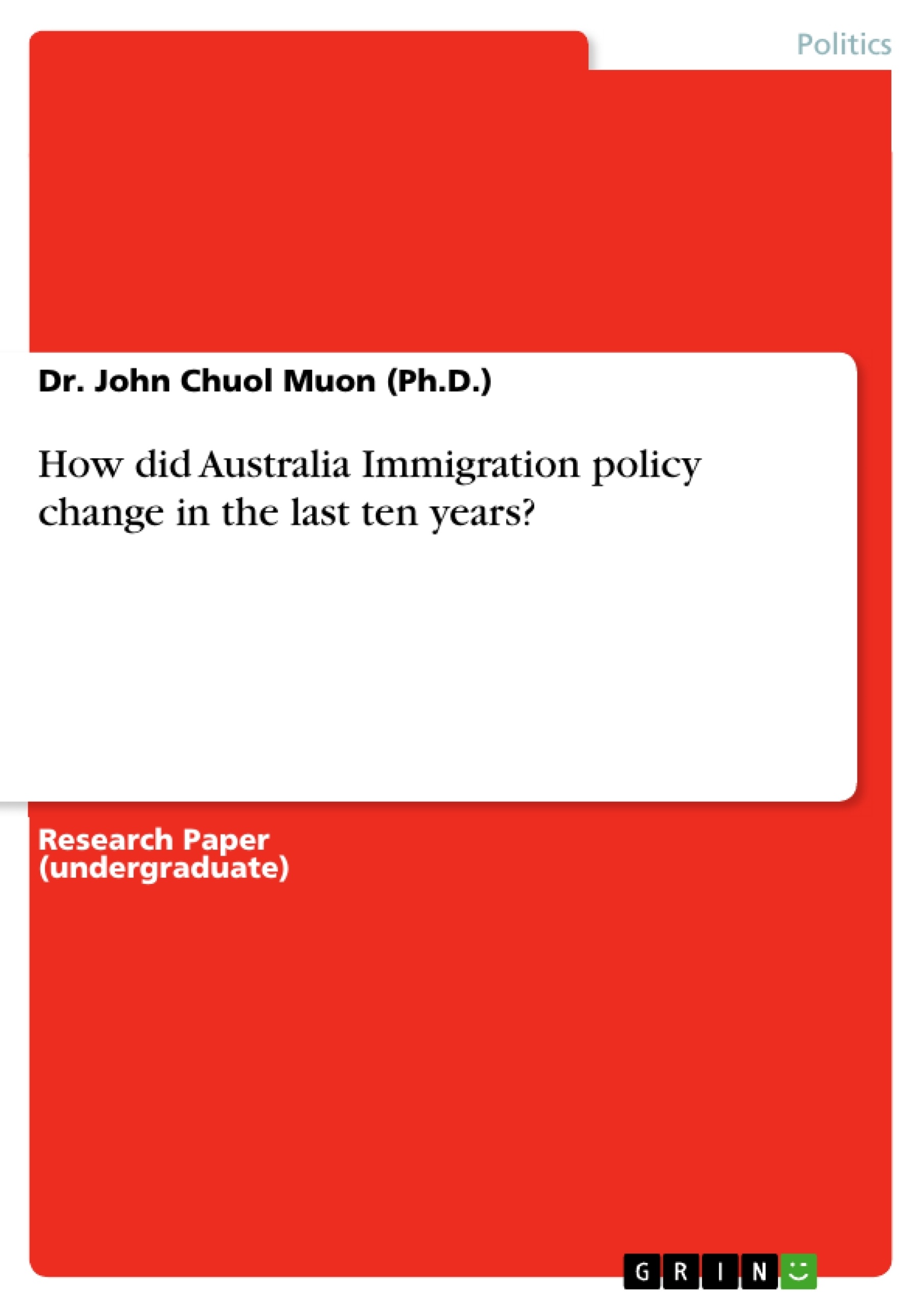Globally, the process of migration is a complicated phenomenon involving huge numbers of people moving from one country to another to escape from unstable conditions and to seek better living conditions and opportunities. Recent political upheavals have increased the number of those people who are seeking asylum in far off areas from their land 2. Since last two centuries, Australia has been shaped by immigrants. Immigration plays a key role in Australian population growth and economic development. The political trends have also impacted the country’s immigration policy, especially in the last decade.
This paper discusses these political trends and the fluctuations the Australian immigration policy has witnessed in
the last ten years due to domestic political trends, multiculturalism policy, two-step immigration policies, the recent asylum seekers issue and globally increased security threats.
Inhaltsverzeichnis (Table of Contents)
- Introduction
- Overview of History of Migration trends
- Migration trends and its causes in the last one decade
- Current Immigration Policy
Zielsetzung und Themenschwerpunkte (Objectives and Key Themes)
This research paper aims to analyze the transformations of Australian immigration policy over the past decade, examining the influence of domestic political trends, multiculturalism policies, two-step immigration approaches, the asylum seeker issue, and global security threats. The paper explores how these factors have shaped the country's immigration landscape.
- Impact of political trends on Australian immigration policy
- Evolution of multiculturalism policies and their implications
- Analysis of two-step immigration policies and their effects
- The role of the asylum seeker issue in shaping immigration policy
- Influence of global security threats on immigration policies
Zusammenfassung der Kapitel (Chapter Summaries)
- Introduction: This section introduces the concept of migration as a complex global phenomenon and highlights its significance for Australia, particularly in terms of population growth and economic development. It emphasizes the influence of political trends on Australian immigration policy over the past decade.
- Overview of History of Migration trends: This chapter provides an overview of the historical evolution of Australian immigration policy, focusing on its transition from a restrictive policy favoring British and "white" immigrants to a more open and inclusive approach, with notable contributions from the Chinese Gold Rush and the post-war era. The chapter discusses the growing cultural and ethnic diversity in Australia and the controversies surrounding multiculturalism.
- Migration trends and its causes in the last one decade: This section delves into the political trends shaping Australian immigration policy over the past decade, analyzing the impact of the Labor Party's rise to power in 2007 and the concept of "Big Australia." It examines the debate surrounding immigration's impact on Australian society, highlighting concerns about security challenges, the effects of diversity, and environmental sustainability.
- Current Immigration Policy: This chapter outlines the current immigration policy framework in Australia, focusing on the migrant program and the humanitarian program. It discusses the emphasis on skilled labor immigration, the skilled visa process, and the evolution of the humanitarian program into the Special Humanitarian Program (SHP). The chapter highlights the policy's focus on attracting skilled individuals and providing asylum to those facing persecution or discrimination.
Schlüsselwörter (Keywords)
The research paper centers around the key themes of Australian immigration policy, multiculturalism, political trends, skilled labor migration, humanitarian program, asylum seekers, and global security threats. The paper explores the interplay of these factors in shaping contemporary Australian immigration policy.
- Arbeit zitieren
- Dr. John Chuol Muon (Ph.D.) (Autor:in), 2016, How did Australia Immigration policy change in the last ten years?, München, GRIN Verlag, https://www.hausarbeiten.de/document/1239223


